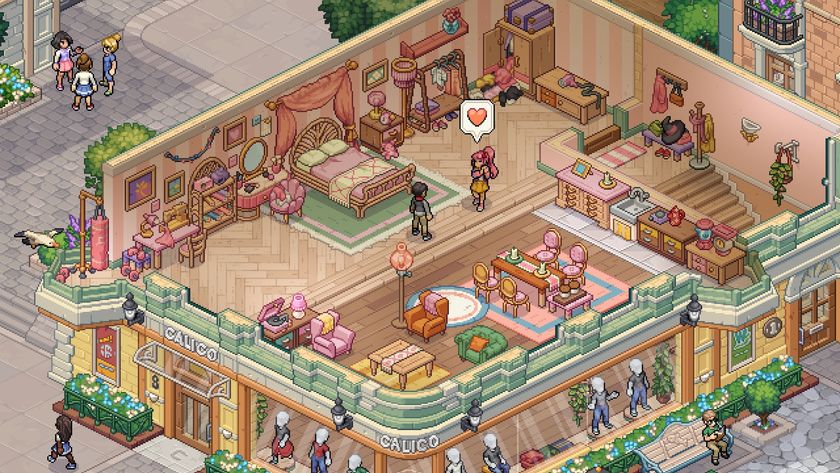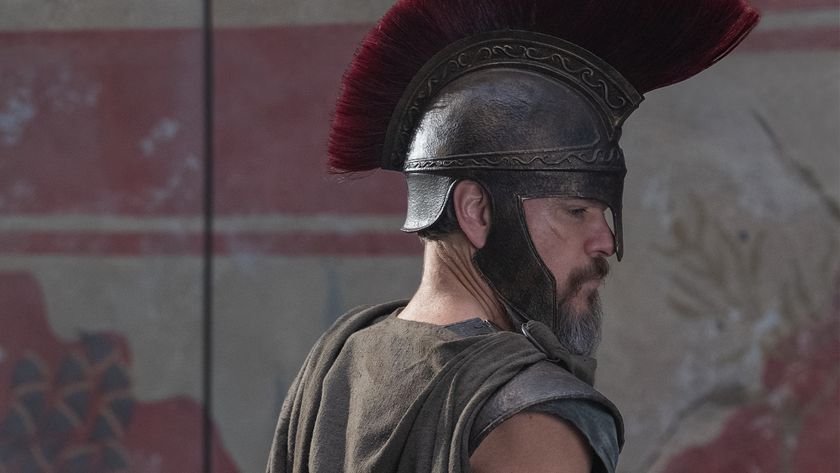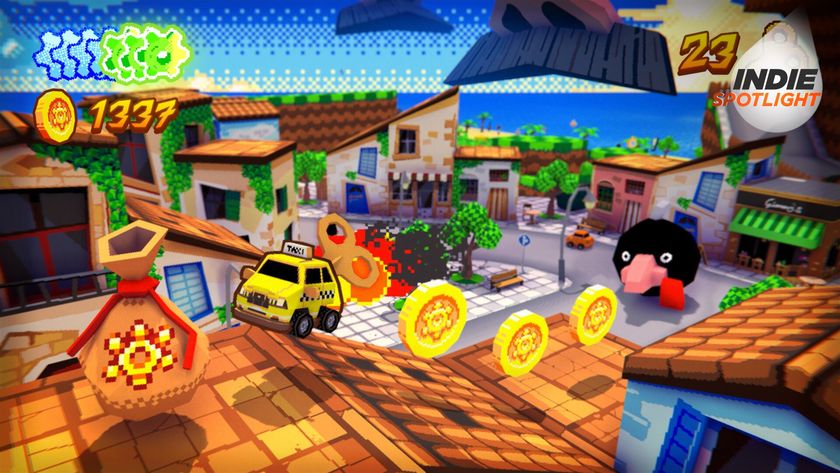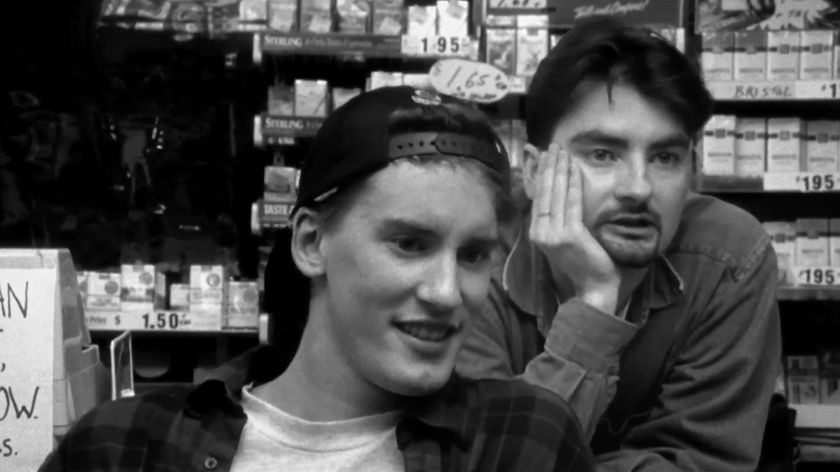Dead Space's toolbox of horrors is what makes the game great
Dead Space was brought to us by EA in the same year as Mirror’s Edge, during a short-lived spell of optimism when it seemed as though investing in new IP, rather than iterating big hitters such as Call of Duty at the precise speed it takes a nation of 14-year-old boys to save up £40, might be the key to success in the game industry. This was never a realistic hope, but the upside is that we’re left with Dead Space, a distinct and accomplished sci-fi original (even if it became a series that iterated itself into irrelevance by grasping for the attention of 14-year-old boys).
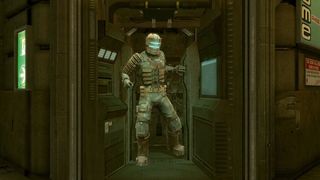
Dead Space is the grizzly end of sci-fi as learned from the blue-collar crew of Alien’s Nostromo. The future, it says, will be a place where replacing washers and making sure humans can breathe in transgalactic flight will trump having a name like Dex Forearm and regenerative health. Its protagonist, Isaac Clarke, fixes things – trams, lifts, shuttles, navigation modules – and wears a rusty brown suit. As an engineer, he’s likeably functional, and the game is commendably focused around him. His weapons are tools – cutters, saws, flamethrowers – and his enemies require precision dismemberment rather than undirected aggression. He is the earnest shed-dad on an autumn afternoon of videogame protagonists, and he lives in a satisfyingly unglamorous future of realistic moving parts designed with brilliant cohesion and striking visuals.
All of which there is to say there’s a purity to Dead Space, and its science fiction; an efficiency of character, presentation, and even language. The game’s opening scene is a model of sharp exposition that introduces tensions, objectives and personal sub-plots, while throwing in a world-building set of just-graspable jargon (“planet cracker”, “gravity tethers”). There’s a confidence here too, all calmly taken in from the single-shot perspective of a cockpit overlooking a dramatic scene: a broken planet, a crippled ship, and a scattered debris field, all glowingly backlit by a dazzling sun.
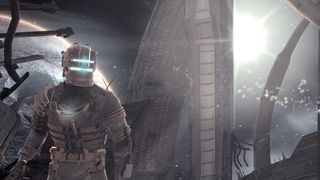
This is a world not in need of a hero so much as a man-shaped set of working parts. Clarke achieves the ultimate efficiency of language by remaining silent throughout, and his face isn’t shown until the game’s last scene (even then, he looks flabbergasted rather than prominently jawed). Whether by design or necessity – the game’s initial prototype was scraped together by a small team using borrowed tech – Clarke is as much a tool as the improvised weapons he uses to dice his enemies.
While there’s an elegance to Clarke’s simplicity, there’s a corresponding richness to the sophisticated world Dead Space builds around him. The game’s basic blocks of interaction, its sound effects and UI design, superbly convey a sense of both futurism and functionality. Again, something is owed to Alien here, and to the analogue future as collectively imagined by Hollywood on the burgeoning fringe of the blockbuster era in the 1970s and 1980s – a future of burbling pips and squawks, of holographic interfaces and workshop textures. It not only captures the same truth revealed by John Carpenter’s Dark Star and George Lucas’s Star Wars (that when we get to the future everything will look worn and you might have to slap the dash to hit light speed), but does it with such accomplished uniformity that every menu navigated, every door opened, and every machine worked intensifies the reality of the world, and the hold it has on us.
Except it’s not really a world but a single ship, navigated in decks like the floors of a haunted house (that the means of travel between decks is a tram is just perfect). Welcome to the USG Ishimura. Like Alien’s Nostromo, it is a mining vessel, and like the Weyland-Yutani Corporation, it hails ahead to a possible internationally conglomerated destiny. It’s also a densely packed warehouse of clichés, and so it’s testament to the game’s other qualities that we barely notice. The ship’s geography is dominated by strobe-lit grey corridors and grand guignol monuments of splayed carcasses that recall a litany of antecedents from Doom to Event Horizon. They are, however, occasionally and spectacularly interrupted by defining moments of originality: a disorienting fight in a debris-strewn anti-grav chamber, or the frantic traversal of the ship’s hull set against the sucking blackness of space.
The thoroughness of the game is apparent in these space walks, where the sound of everything except Clarke’s ragged breathing is swallowed in the vacuum. Again, the best of Dead Space is lean and stripped, and it’s with this minimalism that the game contextualises the horrors Clarke encounters. Revealed through logs and text files – crude necessities of narrative, though well deployed here – we learn of Unitology, a cult-like religion involved in the recovery of the alien artefact behind the game’s transformative horrors. Crucially, we’re not given specifics, just a taste of fanaticism and a hint of conspiracy. It’s enough to ambiguously shade what are already mysterious events. Subtler still are veiled nods towards the wider state of our society four centuries from now, in the Ishimura’s various propagandist public service announcement posters. “Where would you be without science?” beams one, a bright-faced technician smiling out above a pile of skinless cadavers. There’s a heavy echo of Philip K Dick in their enforced optimism (“We can remember it for you wholesale!”), and they say a great deal, without saying anything in particular, about the arrangement of people and power needed to drag humanity into space.
Sign up to the 12DOVE Newsletter
Weekly digests, tales from the communities you love, and more
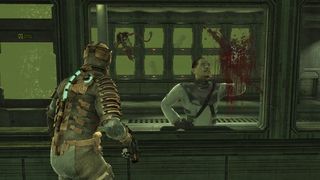
The best thing about all this is that Clarke doesn’t care. Instead, he has his rusty suit and a long job sheet of things to fix and do, which expands to include cutting the arms and legs off most of what used to crew the Ishimura. The thematic consistency of Dead Space is really clinched by its weaponry and enemies, and the combat that brings them together. Clarke’s inventory is a toolbox of sharp, hot things jury-rigged for survival, and key among these sharp, hot things is the Plasma Cutter. In one sense, Dead Space is an iteration of Resident Evil 4, and the Plasma Cutter is a natural successor to Capcom’s laser-sighted pistol, now with three blue lasers rather than a single red one. But it’s more than that, too – it’s a potent symbol of Clarke’s unfussy heroism, a small, effective tool (upgraded properly, it’s the only gun you’ll need) with a simple, practical embellishment of a revolving head that turns the strip of blue lasers from vertical to horizontal and back again with a satisfying bleep.
The practicality of this revolving head only becomes truly obvious once Clarke encounters the necromorphs. These too-human aberrations are a shotgun-wound wedding of Stan Winston’s creature effects in Carpenter’s The Thing and the distorted figures of Francis Bacon’s second Triptych – writhing examples of fallen man in furious agony. Yes, we’re essentially talking about space zombies, but space zombies with pedigree, as well as razor-like scythes for elbows and distended, snapping jaws. The game’s persistent stroke of genius is that brute force won’t deter them – what’s needed is accurate dismemberment and disposal. This is where the punchy Plasma Cutter comes into its own, slicing off legs then, with a revolution of the head, clipping off an arm at the shoulder, methodically cleaving along the horizontal and vertical.
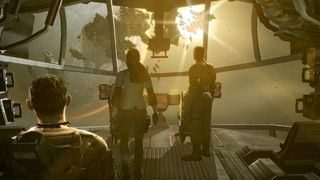
This gives combat a purpose over and above the simple deployment of as much ordnance as possible in the shortest time. Each kill becomes a small, crafted piece of handiwork, and when combined with other armaments and Clarke’s supplementary abilities, it results in a layered model of combat that’s skilful in a way few horror games manage. Initially, the necromorphs come in twos or threes, but by the midway point they’ll be invading rooms in waves, squirming from vents and pouring from the ceiling in multidirectional ambushes. At these moments, the full range of Clarke’s toolset is stretched, and there’s a grim man-with-hammer satisfaction in switching between powers and weapons to select the right thing for the job. You’ll slow onrushers with Clarke’s Stasis power, clear a cloud of crawling parasites with the flamethrower, telekinetically toss a propane canister into a crowd, and switch to the trusty Plasma Cutter to harvest the survivors. Having borrowed so much from Alien, Dead Space solves the problem official adaptations of that series tend to have: how do you keep your inhumanly lethal monster individually terrifying when at some point our hero needs to take on ten of them at a time? The answer is with a dextrous, skill-based approach to combat that makes it feel like you’re surgically crafting your way to safety.
Everything good about Dead Space comes from its underlying cohesion, which binds the no-nonsense stomp of Issac’s iron suit to the Bronx drawl of the engineer whose audio logs clue you into the necromorphs’ weakness. Dead Space is a game with a point of view – that building things is valuable, that design is beautiful, and that the smallest details in the mechanisms through which we interact with the world can have the biggest impact. It’s a game about resourcefulness and repair, about precision and craft, about how default heroism is boring and how a real protagonist should do things. And it reminds us, graphically, that when everything goes to Hell and a collection of razor limbs with a human face scuttles at you, being able to mend a flex is going to be pretty handy.
Read more from Edge here. Or take advantage of our subscription offers for print and digital editions.
Edge magazine was launched in 1993 with a mission to dig deep into the inner workings of the international videogame industry, quickly building a reputation for next-level analysis, features, interviews and reviews that holds fast nearly 30 years on.
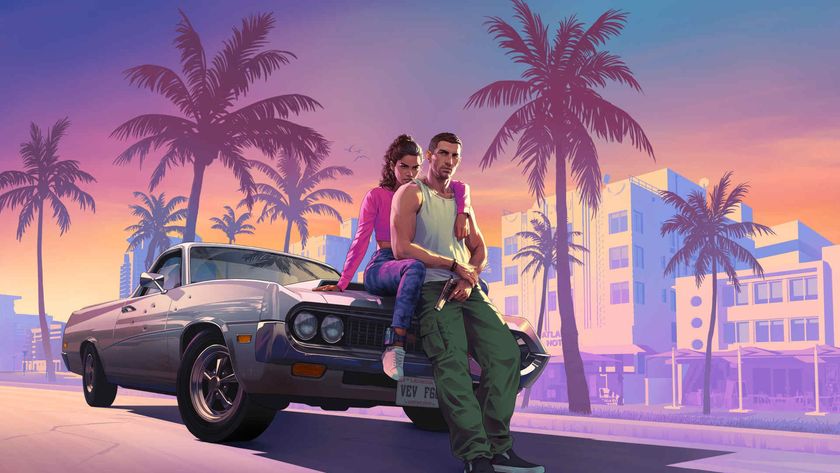
Ahead of GTA 6, Take-Two CEO says he’s “not worried about AI creating hits” because it’s built on recycled data: “Big hits […] need to be created out of thin air”
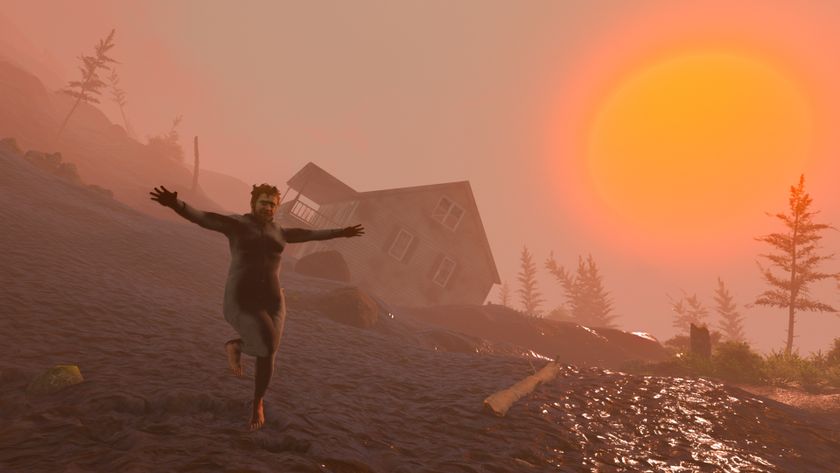
Getting Over It creator Bennett Foddy threatens the world once again: If you want Baby Steps to be a brutal rage game, "you can inflict that on yourself"

A Simpsons Hit and Run Remake will probably never happen – and I don't want it to






